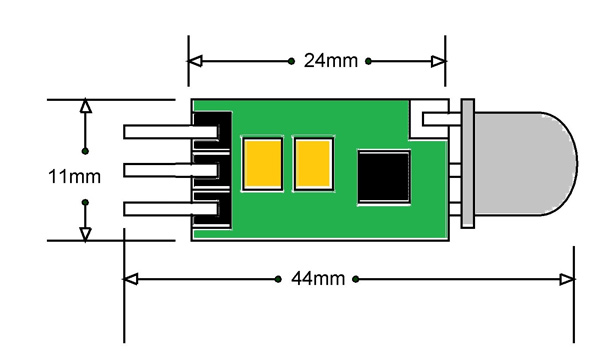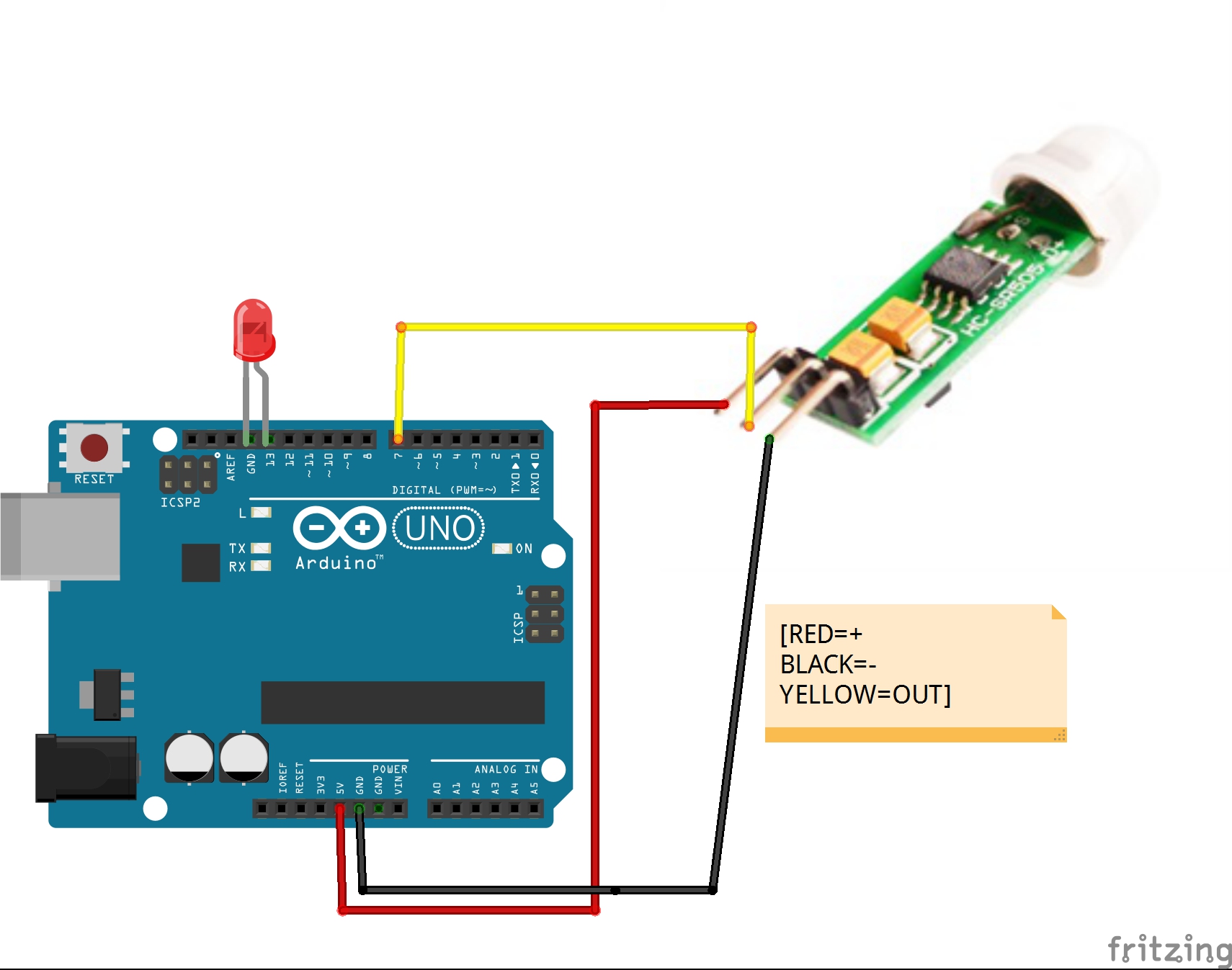PRODUCTS

HC-SR505 INFRARED PIR MOTION SENSOR
MODEL: HC-SR505
(per piece)


The HC-SR505 PIR sensor gets automatically triggered when any object comes in the sensing range. Simply connect power supply and ground. Connect the output pin to ground with LED connected in between them. Also, connect a resistor in series with this LED. When the sensor detects an object, the output pin will deliver 3.3V and Led will glow up. On the other hand, if the sensor does not find any moving object, the output pin will remain at 0 volts and the LED will remain in OFF state.
Interfacing with Arduino
You can interface it with Arduino. The connections are simple. It has three pins. Connect the ground pin1 to the ground of Arduino and pin 3 to the Arduino’s 5V pin. Pin2 is a signal output. It indicates the presence of an object by sending either HIGH or LOW signal. Connect this pin to any digital pin of Arduino.
Let us suppose that we have connected pin 2 at digital pin 2. Then upload the given code on Arduino. Connect an LED between the digital pin and signal pin of the module to observe the operation of the module.
Pin Description:
It consists of three pins which are:
- Pin1 is ground.
- Pin2 is an output pin which provides a signal.
- Pin3 (D+) is a power supply pin. Apply +5V at this pin.
Pin Description
It consists of three pins which are:
- Pin1 is ground.
- Pin2 is an output pin which provides a signal.
- Pin3 (D+) is a power supply pin. Apply +5V at this pin.
- It works within a voltage range of 4.5V to 20V.
- The Quiescent current is less than 60µA.
- It has a maximum sensing distance of 3 meters.
- It provides automatic control along with repeatable triggering by default.
- The sensor consumes very low power.
- The diameter of the sensor lens is 10mm.
- It requires temperature in a range of -20 °C to 80 °C.
- The induction angle is less than 100 degrees.


 FREE DELIVERY FOR ORDERS ABOVE $100 ALL AROUND SINGAPORE!
FREE DELIVERY FOR ORDERS ABOVE $100 ALL AROUND SINGAPORE!
